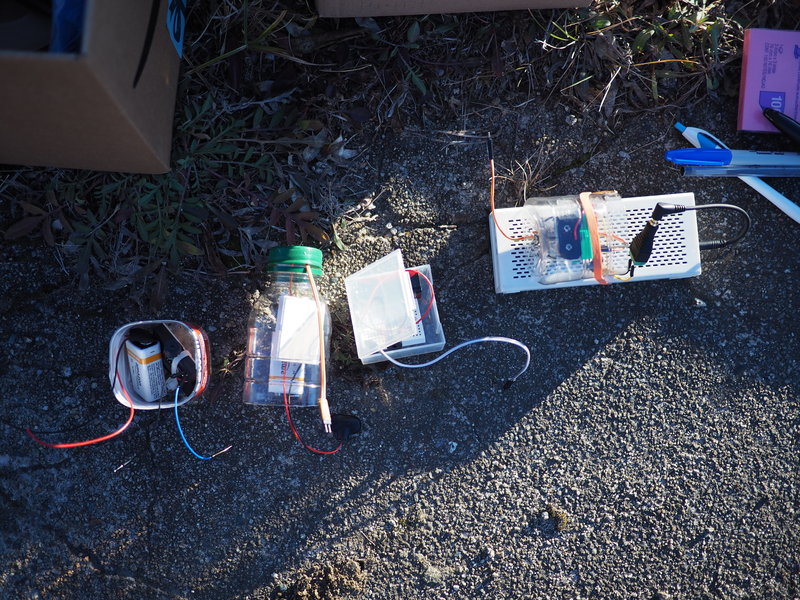A modified version of this story is published in Public Lab's Community Science Forum, Issue 17. Read more from this issue here.
A couple months ago, I worked with Ayana Crichton, Clara Sears, and folks from the One Cranston project and their community partners in a couple events at the Cranston Print Works site in Cranston Rhode Island.
One pretty cool activity we did (apart from kite mapping the site!) was to use the Coqui water sensor, which is a sensor that generates an audible tone when you dip it into water.
We were interested in using a Coqui with a group of kids, and with real water samples we pulled from the river. Though the Coqui by itself can't produce a numeric reading of conductivity, the pitch of the sound it makes goes up if the liquid it's dipped into is more conductive -- so it can be used to compare conductivity among samples.
(there are some attempts to read numeric data by plugging the Coqui into a guitar tuner, or an Arduino -- read more here)
Workshop plan
For the workshop, we started by pulling some samples from the river using small glass bottles tied to some 4-foot rods we had, so kids could dip them in safely without leaning out over the water. We provided gloves so they didn't have to touch the water.
Then, we went back and showed how the Coqui makes a higher-pitched sound in some prepared samples we'd brought -- salty and coffee-filled water. We especially showed that the color of the water doesn't necessarily correspond to conductivity -- salty water, or water with a drop of fertilizer, for example, is perfectly clear, but much more conductive than brown water with coffee grounds in it:

Mega-Coqui
Normally, the Coqui is really quiet, and outdoors there's no chance a big group of kids could hear it. So we attached an audio cable (see #coqui-audio-jack) and plugged it into an amplifier -- a small USB-powered speaker for smartphones.
Then, it was /plenty/ loud -- scroll down for the video! Here you can see a few Coquis (in assorted small boxes and bottles for protection) and one with a jack wired into a speaker:

Comparing samples from the site
Once the students got an idea of how the Coqui responded to different samples -- we brought a few Coquis, so they could play with them individually too -- we got out the samples they'd collected from the river. Unfortunately it was really cold that day, so it was a bit tough to do this part -- we really had to watch that people were warm enough, and it would be ideal to do this on a warmer day, or indoors.
Our plan was to have each sample marked on a printed out map of the site (from Google Maps) using sharpies, and some notes on the site written on the back. We put stickers on each bottle and numbered them, and wanted to write the time and date as well. If it had been warmer I think this would all have been a bit easier...

Next steps
In any case, the basic premise of collecting samples and testing them shortly afterwards, and comparing them to pre-prepared samples seemed to work well. We'd like to improve the part where we mark their positions on a map, and annotate the pitch of the sound coming out (using a guitar tuning app, perhaps). There are plenty of questions and ideas for calibrating Coqui readings up on the Coqui page, so that's a good next step to explore.
This seems (in more reasonable weather) pretty scalable, so if this were done repeatedly at different points and annotated onto a map with dates/times using colored dot stickers, and especially comparing to a reference sample, I think we could build up a map of conductivity measurements at one or more workshops.
Looking forward to trying this again sometime and happy to hear peoples' input!

1 Comments
Noting as a reference, this interesting video on making maps of conductivity data! @mimiss
Reply to this comment...
Log in to comment
Login to comment.